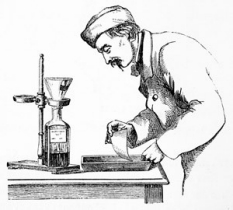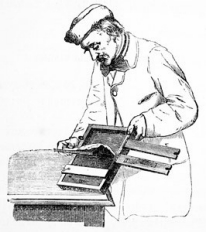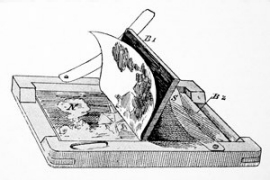Before 1860, the printing of photographs was a delicate, complex operation. Although many photographers in the 1850s continued to use Talbot’s older salted paper printing process, Tripe usually employed the newer albumen process. Invented in 1850 by Louis Désiré Blanquart-Evrard, it used albumen found in egg whites to bind the chemicals to the surface of the paper. By the late 1850s, commercially manufactured albumen paper was readily available in Europe and America, but Tripe made his own through a laborious process.
Exhibition Catalog Captain Linnaeus Tripe
Roger Taylor, Crispin Branfoot, with Sarah Greenough and Malcolm Daniel
AudioIntroduction to the Exhibition, lecture by Sarah Greenough, exhibition curator
Audio Symposium Lecture Part 1: ''A Glorious Galaxy of Monuments': Photography and the Archaeological Survey of India after Tripe," John Falconer
Audio Symposium Lecture Part 2: "Interpreting Early Photography in India: Medium and Method," Zahid R. Chaudhary
Audio Symposium Lecture Part 3: "Measuring Time: Linnaeus Tripe’s Inscription of the Thanjavur Temple, 1858," Maria Antonella Pelizzari
PDF Download Public Symposium Program
Photographic Printing Techniques of the 1850s
First, he floated a thin sheet of French paper on a solution of chloride salts and albumen (fig. 1). The dilution of the albumen determined the thickness of the coating, which in turn influenced the level of sheen or gloss of the print. Preferring a low sheen, Tripe diluted his albumen generously with water and allowed the paper to airdry, as ironing imparted a higher gloss (fig. 2). He then carefully floated this piece of paper on a bath of silver nitrate in a darkened room to form the light-sensitive silver chloride. The paper was dried again, then put in a printing frame in direct contact with the negative and placed in the sun for exposure. After several minutes, the sun darkened the print: its progress could be measured by opening the back of the printing frame (figs. 3 and 4).
Once the print had reached the desired intensity, it was taken back to the darkroom where it was washed, then rendered insensitive to light by “fixing” it in a solution of hyposulphite of soda (“hypo”). Following another wash, Tripe then toned his prints with a solution of gold to gain greater permanence and a deep purple color. The print was again washed and fixed in a bath of hypo, before a final washing and drying.
For figs. 1, 2, and 4, see Arthur Chevalier, L’étudiant photographe (Paris, c. 1867), 116, 117, 120. For fig. 3, see Hector MacLean, Popular Photographic Printing Processes (London, 1898), 10. National Gallery of Art Library, David K. E. Bruce Fund
See photographic process videos from George Eastman House on Talbot's processes and the albumen print.
Examples by Tripe's Contemporaries:













